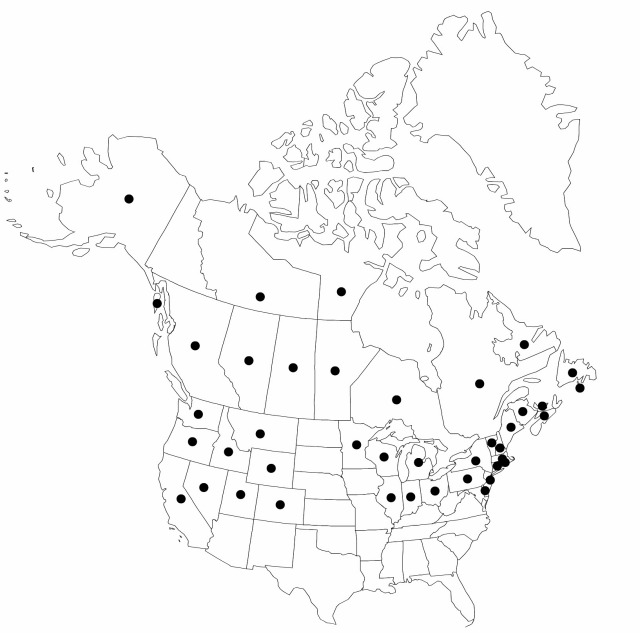Eriophorum gracile
Catal. Bot. 2: Add. [1]. 1800.
Plants colonial from long-creeping rhizomes. Culms 20–60 cm × 0.5–0.8 mm, distally smooth. Leaves: blades trigonous-channeled in cross section, to 30 cm × 1–2 mm; distal leaf blade 1–4 cm × 1–1.5 mm, shorter than its 3.5–5.5 cm sheath. Inflorescences: blade-bearing involucral bracts solitary, similar to distal leaf, blade usually gray or black proximally, 0.6–2 cm. Spikelets (1–)2–5, in subumbels, narrowly ovoid, 7–10 mm in flower, 15–25 mm in fruit; peduncles 5–30 mm, scabrous; scales black or dark gray with black tip, broadly ovate, 3–4 mm, scarious, margins absent or to 0.1 mm wide, 5–9-ribbed, midrib prominent, usually dilated distally, reaching tip, apex obtuse-subacute. Flowers: perianth bristles 10 or more, white, 10–15 mm, smooth; anthers 1–2.5 mm. Achenes narrowly obovoid, 1.5–3 mm.
Phenology: Fruiting late spring–mid summer.
Habitat: Meadows, bogs, shores, usually peaty, acidic substrates
Elevation: 0–4000 m
Distribution

St. Pierre and Miquelon, Alta., B.C., Man., N.B., Nfld. and Labr., N.W.T., N.S., Nunavut, Ont., P.E.I., Que., Sask., Alaska, Calif., Colo., Conn., Del., Idaho, Ill., Ind., Maine, Mass., Mich., Minn., Mont., Nev., N.H., N.J., N.Y., Ohio, Oreg., Pa., R.I., Utah, Vt., Wash., Wis., Wyo., Eurasia.
Discussion
Selected References
None.
